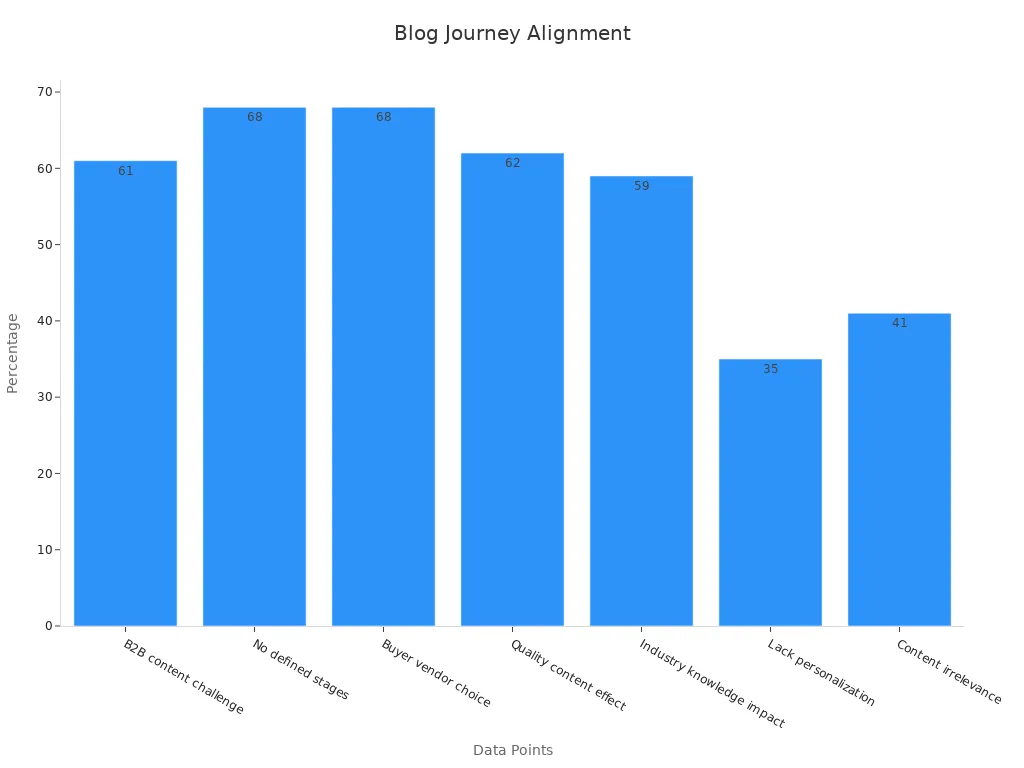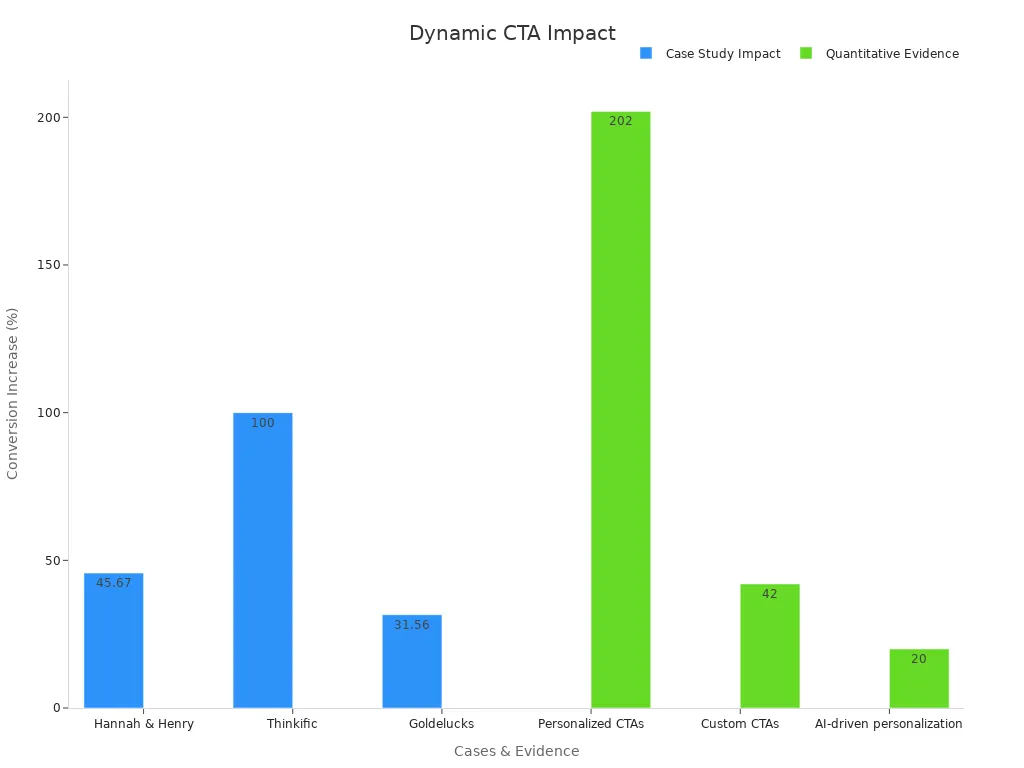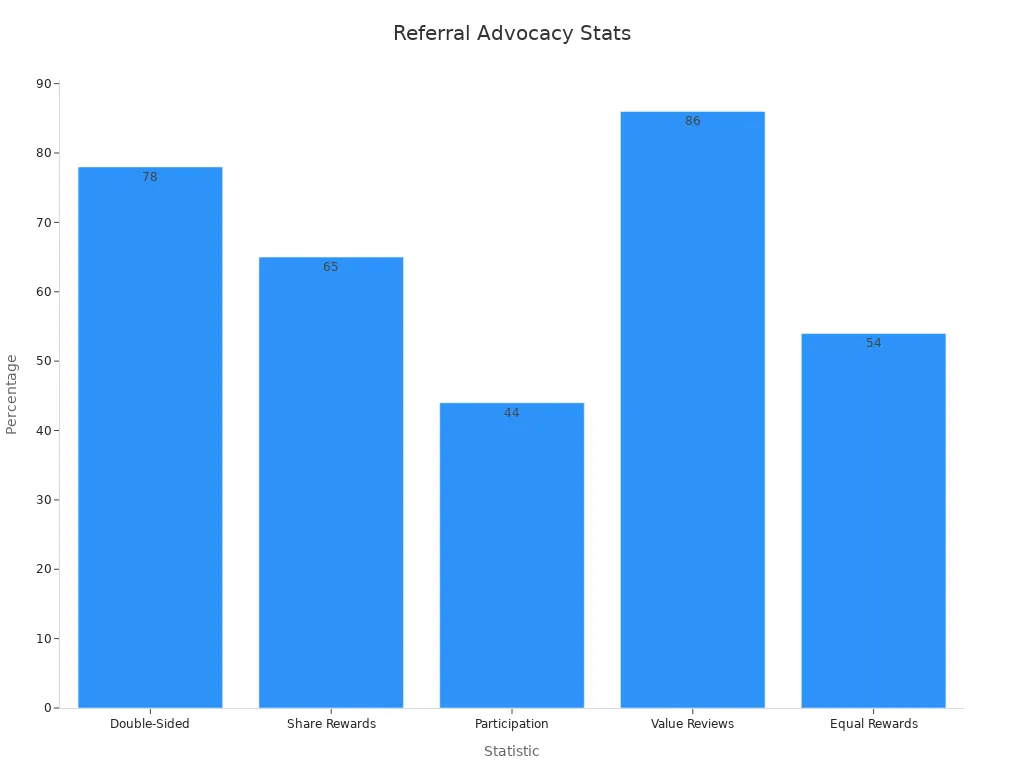Blog Optimization for Specific Buyer Stages with AI

AI transforms blog optimization by helping you match content to every stage of the buyer’s journey. When you align your blog with what buyers need, you see real results: 68% of buyers pick vendors who understand their needs, and 62% choose those with high-quality content. AI tools boost engagement, conversions, and SEO rankings by personalizing each post.

Unique, helpful posts that use AI see up to 83% higher engagement and reach first-page rankings 43% faster.
Key Takeaways
AI helps match blog content to each buyer stage, improving engagement and sales.
Personalized content and dynamic calls to action make readers feel understood and boost conversions.
Using AI tools to analyze data reveals what content works and where to improve your blog.
Balancing AI efficiency with human creativity ensures high-quality, trustworthy content.
Protecting user data and integrating AI carefully keeps readers safe and your blog running smoothly.
Buyer Journey Overview

Stages Explained
You move through several stages when you make a purchase decision. Each stage shapes how you search for information and what content you find helpful. Marketers call this path the buyer’s journey. It usually includes awareness, consideration, decision, retention, and loyalty. At each step, you look for different answers and resources.
Here’s a clear breakdown of each stage and the best content for it:
Buyer Stage | What You Need at This Stage | Best Content Types |
|---|---|---|
Awareness | You notice a problem or need and start looking for answers. | Blog posts, videos, educational guides |
Consideration | You compare options and want to know which solution fits you best. | Case studies, comparison charts, whitepapers |
Decision | You are ready to choose and want proof and incentives. | Demos, exclusive offers, downloadable guides |
Retention | You want support and tips to get the most from your purchase. | Troubleshooting articles, product recommendations |
Loyalty | You look for ways to stay connected and share your experience. | Advocacy programs, renewal offers, engagement content |
As you move from awareness to decision, you read more content and involve more people in the process. The table below shows how content consumption grows at each stage:
Buyer Journey Stage | Average Blogs Read per Prospect | Unique Readers per Company | Impact on Deal Size | Impact on Sales Cycle |
|---|---|---|---|---|
Pre-MQL | 4.28 | 2.51 | +14.3% (2-5 blogs), +27.1% (>5 blogs) | — |
MQL to SQL | 9.12 (total) | 4.2 | +6.2% (2-5 blogs), +9.4% (>5 blogs) | — |
SQL to Closed-Won | >15 | 14.73 | — | 3.3%–9.1% faster |
Why It Matters
Understanding these stages helps you create the right content at the right time. Companies that match their content to each stage see better results. You can increase revenue by 47% and boost sales by 20% when you personalize the journey. Most buyers start with a broad search and read several blogs before talking to a business. When you provide helpful content for every stage, you build trust, speed up decisions, and grow your business.
Tip: Focus on what buyers need at each step. This approach leads to higher engagement and more sales.
Blog Optimization with AI

Mapping Content
You want your blog to speak to every buyer, no matter where they are in their journey. AI helps you map your content to each stage. It studies what your readers do, what they like, and what they search for. This way, you can match each blog post to the right moment in the buyer’s path.
AI tools look at data from your website, social media, and even email. They find patterns in how people move from one stage to the next. For example, if someone reads a lot of beginner guides, AI knows they are in the awareness stage. If they start looking at product comparisons, AI moves them to the consideration stage.
You can use AI to:
Group your blog posts by buyer stage.
Spot gaps where you need more content.
Suggest topics that fit each stage.
Update old posts to match new buyer needs.
Tip: Use AI-powered content audits to see which posts work best for each stage. This helps you focus your efforts and improve your blog optimization plan.
A good mapping strategy means your readers always find what they need. You guide them step by step, making their journey smooth and helpful.
Personalization
Personalization makes your blog stand out. AI lets you show the right message to the right person at the right time. It learns from each visitor’s actions, like what they read, click, or share. Then, it changes your blog content to fit their interests.
AI uses machine learning and natural language processing to understand your readers. It can change headlines, suggest related posts, or even rewrite parts of your blog to match what each person wants. For example, if a reader often looks at product reviews, AI can show more reviews or comparison charts.
Personalized blog optimization brings many benefits:
Readers stay longer on your site.
They find your content more helpful.
You see higher conversion rates and more loyal customers.
A survey by the IBM Institute for Business Value found that companies using AI for personalization can grow revenue three times faster than others. Most CEOs now see personalization as key to customer experience. When you use AI, you can also save money by automating tasks and reaching more people at once.
Social media platforms like Facebook and Instagram use AI to show posts that match each user’s likes and comments. This keeps people engaged and coming back for more. You can use the same ideas for your blog optimization. Show readers content that fits their needs, and they will trust your brand.
Note: AI-driven personalization works best when you keep user data safe. Use encryption and update your AI models often to protect privacy.
Best Practices for AI Blog Optimization:
Start with clear goals for each buyer stage.
Use AI to track what works and what does not.
Test different headlines, images, and calls to action.
Blend AI insights with your own creativity for unique content.
Common Pitfalls:
Relying only on AI without human review.
Ignoring data privacy rules.
Using too much automation, which can make content feel cold.
When you use AI for blog optimization, you give each reader a better experience. You help them find answers faster and build trust with your brand.
Awareness Stage
Content Ideation
You want to attract new visitors who may not know your brand yet. Start by using creative techniques to generate ideas that connect with your audience. Mind mapping helps you organize thoughts around a central topic. This method sparks new ideas and keeps your content fresh. Customer research is also important. Gather feedback through surveys, interviews, and social listening. You will learn what problems your audience faces and what interests them most.
Try these proven techniques for content ideation:
Brainstorm with your team to keep ideas on-brand and consistent.
Use keyword research tools like Semrush or Ahrefs to find popular search terms.
Check social media and online communities for trending questions.
Map your sales funnel to focus on broad, educational topics at the top.
Repurpose existing content into new formats, such as videos or infographics.
Listicles, how-to guides, and answers to common questions work well at this stage. Newsjacking, or using current events, can also boost engagement and visibility. When you use these methods, you create content that draws in readers and builds trust.
Tip: Use user behavior tools to see how visitors interact with your content. This helps you improve your blog optimization strategy.
SEO Strategies
SEO plays a key role in the awareness stage. Focus on broad, high-traffic keywords that match what people search for when they first discover a problem. Create informational content like how-to guides and educational articles. This approach builds trust and positions your brand as a helpful resource.
Target high-volume, informational keywords to capture general searches.
Align your content with user intent to avoid pushing sales too soon.
Use Google Search Console and Google Analytics to track impressions, rankings, and engagement.
Leverage social media and backlinks to boost your content’s visibility and authority.
Metrics such as comments, shares, impressions, and unique visitors show how well your content resonates. Fast page load times and engaging visuals also keep visitors on your site longer. When you review these metrics regularly, you can adjust your blog optimization plan for better results.
Consideration Stage
Personalization Tools
At the consideration stage, you want to help readers compare options and find the best fit. Personalization tools use AI to make this process easier and more engaging. These tools study your readers’ actions and preferences. They then show content, products, or recommendations that match each person’s needs.
Many brands use personalization to guide prospects. For example:
Nespresso’s “Coffee Profiler” quiz asks fun questions and suggests coffee blends based on your answers. This makes you feel like a barista is helping you.
Discover’s quiz changes its questions as you answer, leading you to the best bank account for your needs.
Nordstrom offers a personal stylist service. You get product suggestions and free appointments, which builds trust and helps you decide.
These tools make your experience feel unique. You get answers that fit your situation, so you feel more confident about your choices.
Marketing platforms like HubSpot and Google Analytics 4 also help. They track how you interact with content and emails. Marketers use this data to group readers, send the right messages, and improve blog posts. When you see content that matches your interests, you are more likely to move forward and convert.
Personalization tools help you make informed decisions by showing you what matters most.
Interactive Content
Interactive content keeps you involved and helps you learn more about your options. You might see quizzes, calculators, or guided tours. These tools let you try features, answer questions, or explore products in real time.
Marketers use several metrics to see how interactive content works:
Metric / Interactive Content Type | Description / Role in Consideration Stage |
|---|---|
User Activity Tracking | Tracks clicks, page views, and navigation to see what you explore. |
Conversion Funnel Analysis | Follows your steps through sign-up or onboarding to spot where you might stop. |
Feature Adoption and Usage Analysis | Shows which features you try, helping brands see what interests you. |
Event Tracking | Monitors actions like adding items to a cart to measure engagement. |
Retention Analysis | Checks if you keep coming back after trying content. |
In-app Guided Experiences | Offers tips and walkthroughs to help you understand products and stay engaged. |
When you use interactive content, you get answers faster and feel more confident. You can compare options, ask questions, and see how products work. This makes it easier to choose the right solution for your needs.
Decision Stage
AI Support
You reach the decision stage when you feel ready to choose a product or service. AI gives you the support you need to make that choice with confidence. AI tools can analyze your actions on the website. They notice what you click, how long you stay, and which products you view. With this information, AI can show you the most helpful content, such as customer reviews, product demos, or special offers.
AI also helps you compare products quickly. It can highlight key features, show side-by-side comparisons, and answer common questions. You save time and avoid confusion. Many companies use AI chatbots to guide you through the final steps. These chatbots answer your questions right away and help you complete your purchase.
Tip: Use AI-powered chat or recommendation tools to get instant answers and find the best deal for your needs.
Dynamic CTAs
Dynamic calls to action (CTAs) use AI to show you the right message at the right time. Instead of seeing the same button or offer as everyone else, you get a CTA that matches your interests and stage in the journey. This makes you more likely to take action.
Personalized CTAs work much better than generic ones. Studies show that custom CTAs can convert 202% more visitors into leads. When companies tailor CTAs to your needs, they see big results. For example, Thinkific created over 700 landing pages with AI-powered CTAs and doubled their growth. Hannah & Henry used AI to change product pages based on user behavior and saw a 45.67% revenue increase.
Case Study / Example | Industry | Challenge | AI-Powered Solution | Result / Impact |
|---|---|---|---|---|
Hannah & Henry | Ecommerce (Fashion) | Low product page conversions due to generic content | AI optimized product pages with tailored slogans, reviews, and dynamic visuals based on user behavior | 45.67% revenue increase |
Thinkific | Online Education Platform | Stagnant growth from generic landing pages | Created 700+ tailored landing pages with personalized CTAs and content, refined by A/B testing | Doubled growth via increased conversions |
Goldelucks | Ecommerce (Food) | High cart abandonment | Data-driven product page optimization with clearer CTAs and targeted pop-ups | 31.56% increase in orders, reduced abandonment |

Personalized CTAs convert 202% better than generic CTAs.
Custom CTAs tailored to your interests or buyer stage convert 42% more visitors into leads.
68% of marketers say dynamic personalization, including CTAs, boosts campaign performance.
AI-powered dynamic CTAs help you make decisions faster and with more confidence. You see the right offer at the right time, which leads to higher conversions and better results for both you and the business.
Retention Stage
Analytics
You want your readers and customers to keep coming back. Analytics help you understand what keeps them engaged. When you use AI-driven analytics, you can track how people interact with your content. You see which blog posts get the most visits, which features users try, and where they spend the most time. This information helps you improve your blog and make it more useful.
Many top companies use analytics to boost retention. Here are some examples:
The New York Times uses reader behavior analytics to personalize email newsletters. This increases engagement and keeps subscribers longer.
BuzzFeed tracks how well each article performs. They use this data to change their content strategy, leading to more shares and visits.
Spotify studies listening habits with AI. It recommends playlists that match your taste, so you keep listening.
Netflix looks at what you watch. It predicts which shows will be popular and creates new content, which keeps subscribers coming back.
AI-powered marketing tools like CapCut Commerce Pro also track viewer behavior and preferences. This helps you see what works and what does not. When you know what your audience likes, you can create more of it. Personalization based on interests and habits makes your content feel special, which is key for retention.
Follow-Up Content
Follow-up content keeps your audience engaged after their first visit or purchase. You can use analytics to see what topics interest your readers most. Then, you send them personalized emails, guides, or tips that match their needs. This makes them feel valued and encourages them to return.
Companies that use regular follow-up see better retention. For example, Sammons Financial Group improved employee engagement by collecting feedback more often and acting on it quickly. This led to stronger commitment and higher retention. You can do the same with your blog. Track product usage, feature adoption, and customer feedback. Use this data to send targeted messages, onboarding guides, or educational resources.
Metrics like Net Promoter Score (NPS) and Customer Health Score help you spot readers who might leave. When you act on feedback and solve problems fast, you build trust. Userflow’s case studies show that combining data insights with tailored content boosts retention. You keep your audience happy and loyal by staying connected and helpful.
Advocacy Stage
Referral Programs
You can turn happy customers into powerful advocates by using referral programs. These programs reward people for sharing your blog or brand with friends. Most brands use double-sided referral programs, which means both you and your friend get a reward. This approach encourages more people to join and builds loyalty on both sides.
Statistic | Description | Relevance to Advocacy Stage |
|---|---|---|
Most referral programs reward both referrer and referred customer, creating mutual incentives. | Encourages participation and loyalty on both sides, fostering advocacy. | |
65% of referrers prefer to share rewards | Referrers are more motivated when their friends also benefit. | Builds goodwill and genuine word-of-mouth, key in advocacy. |
44% of consumers participate in referral programs | Nearly half of consumers engage in referral programs. | Indicates significant consumer involvement in advocacy activities. |
86% of consumers value recommendations and reviews | Recommendations heavily influence purchase decisions over traditional ads. | Highlights the power of advocacy through referrals in driving sales. |
54% of programs offer equal rewards to referrer and referred | Equal rewards create fairness and balance in referral incentives. | Supports sustained advocacy by valuing both parties equally. |
Over 4 in 5 consumers learn about new brands through conversations | Word-of-mouth remains a dominant channel for brand discovery. | Demonstrates the critical role of advocacy in customer acquisition. |

You help your blog grow when you encourage readers to share. People trust recommendations from friends more than ads. When you offer fair rewards, you make sharing feel good for everyone.
Tip: Double-sided rewards and equal incentives keep both you and your friends engaged and motivated.
Engaging Advocates
You can build a strong community by engaging your advocates. These loyal readers help spread your message, bring in new visitors, and boost your brand’s reputation. You should track key metrics to see how well your advocacy efforts work.
Metric | Explanation |
|---|---|
Measures how likely readers are to recommend your blog. | |
Referral Rate | Shows how many new readers come from referrals. |
Advocate Conversion Rate | Tracks how many satisfied readers become active promoters. |
Advocate Engagement | Measures how often advocates participate and share your content. |
Advocate Lifetime Value (ALV) | Compares the long-term value of advocates to other readers. |
Customer Attrition | Shows if advocacy helps keep readers loyal. |
Advocate Revenue | Tracks sales or revenue from advocate-driven referrals. |
You can increase loyalty by recognizing advocates publicly, offering personalized rewards, and asking for feedback. Social media campaigns and community events also help advocates feel valued. When you listen to your advocates, you improve your blog and build lasting relationships. This approach leads to higher retention, more referrals, and a stronger brand.
Challenges and Best Practices
Data Privacy
You need to protect your readers’ data when you use AI for blog optimization. Privacy concerns often include unauthorized data collection, using data without consent, and risks of data leaks. Some companies have faced problems when users’ information was used for AI training without clear permission. AI can also make mistakes, like sharing private details by accident. Privacy laws, such as the EU’s GDPR, set strict rules for handling data. You can use new AI tools like federated learning and differential privacy to keep information safe. These tools help you train AI models without sharing raw data. Always check your privacy settings and update your policies to match the latest laws.
Tip: Make sure you only collect the data you need and always get clear consent from your readers.
Integration
You want your AI tools to work smoothly with your current blog strategy. Start with a clear plan that lists your goals and the AI technologies you will use. Good integration means your data stays organized and your team knows how to use new tools. Many companies use APIs and plugins to connect AI with their existing systems. You should train your team so they feel comfortable working with AI. Address any technical challenges early, such as data quality or system compatibility. A step-by-step approach helps you avoid mistakes and keeps your blog running well.
Use APIs and plugins for easy connections.
Train your team and check for technical issues.
Content Quality
High-quality content is the heart of blog optimization. You need to balance AI efficiency with human creativity. AI can help you create SEO-friendly posts and analyze trends, but only humans can add unique stories and emotional depth. Experts say you should focus on originality, trustworthiness, and user value. Google’s E-E-A-T guidelines (Experience, Expertise, Authority, Trustworthiness) are important for ranking well. Use AI for routine tasks, but let humans handle creative and expert content. Always review your posts for accuracy and update them as needed. Track your results with metrics like engagement and search rankings to keep improving.
“The goal of humans and AI both is to have highly relevant and engaging content that solves a user’s problem.” – Josiah Bussing
You can transform your blog by using AI to match content with each buyer stage. For example, AI helps you highlight common challenges in the awareness stage, offer practical solutions in the consideration stage, and showcase unique benefits in the decision stage. This approach makes blog optimization more effective. Start by auditing your blog and adding AI-driven strategies. When you blend AI with your creativity, you boost engagement and improve SEO.
FAQ
How does AI know which buyer stage a reader is in?
AI tracks what you read, click, and search. It uses this data to guess your stage. For example, if you read beginner guides, AI places you in the awareness stage.
Can AI improve my blog’s SEO?
Yes! AI finds the best keywords, suggests topics, and checks your content for SEO mistakes. You get higher rankings and more visitors when you follow AI’s advice.
Is my data safe when blogs use AI?
Most companies use strong security tools to protect your data. You should check privacy policies and only share information you trust.
What is the biggest mistake when using AI for blog optimization?
Many people rely only on AI and skip human review. You should always check AI’s work. Add your own ideas and stories to keep your blog unique.
See Also
Achieving SEO Excellence Using Perplexity AI Techniques
Creating Blogs With AI: Hosting, Writing, And SEO
Stepwise Guide To Optimizing Blog SEO In 2024

